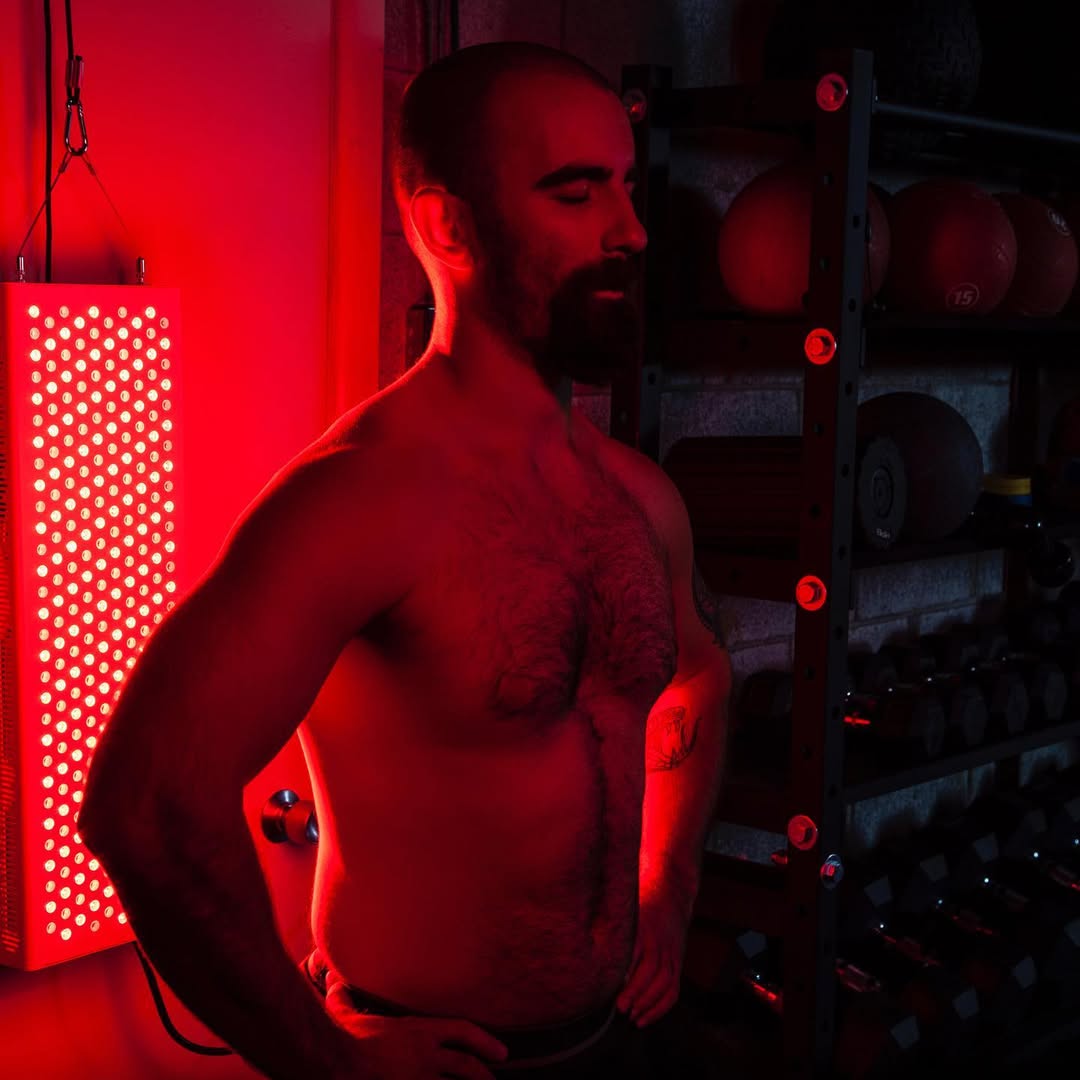![]() Free Shipping
Free Shipping ![]() Buy Now, Pay Later
Buy Now, Pay Later ![]() Eligible
Eligible
Red Light Therapy for Allergic Rhinitis: A Promising Natural Treatment

Introduction
Allergic rhinitis (AR), commonly known as hay fever, affects millions of people worldwide. Characterized by symptoms such as sneezing, nasal congestion, itchy eyes, and a runny nose, AR can significantly impact quality of life. Traditional treatments include antihistamines, corticosteroids, and decongestants, but these often come with side effects like drowsiness, dry mouth, and long-term dependency concerns.
In recent years, red light therapy (RLT), also known as photobiomodulation (PBM), has emerged as a promising natural treatment for allergic rhinitis. This non-invasive therapy uses low-level red and near-infrared light to reduce inflammation, modulate immune responses, and promote healing. But does it really work for allergies? Let’s explore the science, benefits, and practical applications of red light therapy for allergic rhinitis.
Understanding Allergic Rhinitis
What is Allergic Rhinitis?
Allergic rhinitis is an IgE-mediated inflammatory response triggered by allergens such as pollen, dust mites, pet dander, or mold. When these allergens enter the nasal passages, the immune system overreacts, releasing histamine and other inflammatory mediators. This leads to:
- Sneezing
- Nasal congestion
- Runny nose (rhinorrhea)
- Itchy eyes, nose, and throat
- Fatigue and sleep disturbances
VELLGUS Elite V2
THE #1 RATED RED LIGHT DEVICE
VELLGUS pro V2
THE #1 RATED FULL BODY RED LIGHT DEVICE
Current Treatment Options
- Antihistamines (e.g., cetirizine, loratadine) – Block histamine but may cause drowsiness.
- Nasal corticosteroids (e.g., fluticasone) – Reduce inflammation but can lead to nasal dryness.
- Decongestants (e.g., pseudoephedrine) – Provide short-term relief but risk rebound congestion.
- Immunotherapy (allergy shots) – Long-term solution but requires regular visits.
Given these limitations, many patients seek alternative therapies, and red light therapy is gaining attention for its potential to alleviate allergic symptoms without side effects.
What is Red Light Therapy?
Red light therapy (RLT) involves exposing the body to low-wavelength red (630-700 nm) and near-infrared (700-1100 nm) light. Unlike UV light, which damages skin, RLT penetrates tissues without causing harm, stimulating cellular repair and reducing inflammation.
How Does Red Light Therapy Work?
RLT works through photobiomodulation, where light energy is absorbed by mitochondria (the cell’s powerhouse), boosting adenosine triphosphate (ATP) production. This enhances cellular function, leading to:
- Reduced inflammation (by lowering pro-inflammatory cytokines like TNF-α and IL-6)
- Improved blood circulation (vasodilation)
- Enhanced tissue repair (collagen production)
- Immune modulation (balancing Th1/Th2 responses)
These mechanisms make RLT a potential therapy for allergic rhinitis, as it may help calm overactive immune responses and reduce nasal inflammation.
Scientific Evidence: Can Red Light Therapy Help Allergic Rhinitis?
Several studies suggest that red and near-infrared light can modulate immune responses and reduce allergic symptoms.
1. Anti-Inflammatory Effects
- A 2016 study in Lasers in Medical Science found that RLT reduced nasal inflammation in allergic rhinitis patients by suppressing mast cell activation (a key player in allergic reactions).
- Another study in Photomedicine and Laser Surgery (2018) showed that near-infrared light decreased IL-4 and IL-5 (cytokines involved in allergic responses).
2. Improved Nasal Airflow
- Research published in the American Journal of Otolaryngology (2020) found that RLT improved nasal congestion in chronic rhinitis patients by reducing mucosal swelling.
3. Immune System Modulation
- A 2021 study in Frontiers in Immunology suggested that RLT can shift the immune response from Th2 (allergy-promoting) to Th1 (anti-allergy), potentially reducing hypersensitivity reactions.
While more large-scale clinical trials are needed, current evidence supports RLT as a complementary treatment for allergic rhinitis.
How to Use Red Light Therapy for Allergic Rhinitis
1. Choosing the Right Device
- Wavelength: Optimal ranges are 630-660 nm (red light) and 810-850 nm (near-infrared).
- Power Density: Look for devices with 50-200 mW/cm² for effective penetration.
- FDA-Cleared Devices: Brands like Joovv, Mito Red Light, and Rouge offer high-quality panels.
2. Treatment Protocol
- Nasal Application: Shine the light directly on the sinus area (bridge of the nose, cheeks) for 5-10 minutes daily.
- General Immune Support: Full-body exposure (10-20 minutes, 3-5x/week) may help modulate systemic inflammation.
3. Combining with Other Therapies
- Saline nasal rinses (to clear allergens)
- Quercetin & Vitamin C (natural antihistamines)
- Probiotics (to support immune balance)
Potential Benefits of RLT for Allergic Rhinitis
- Non-Invasive & Drug-Free – No side effects like drowsiness or dependency.
- Reduces Nasal Congestion – Improves airflow by decreasing mucosal swelling.
- Long-Term Immune Modulation – May reduce frequency and severity of allergic reactions.
- Improves Sleep & Energy – By reducing nighttime congestion and fatigue.
Limitations & Considerations
- Not a Cure: RLT helps manage symptoms but doesn’t eliminate allergies.
- Consistency Required: Daily use for several weeks may be needed for noticeable effects.
- Cost: High-quality devices can be expensive, though clinics offer professional treatments.
Conclusion
Red light therapy presents a safe, natural, and science-backed option for managing allergic rhinitis. By reducing inflammation, improving nasal airflow, and modulating immune responses, RLT may offer relief for those struggling with seasonal or perennial allergies. While it shouldn’t replace conventional treatments entirely, it serves as an excellent adjunct therapy for long-term symptom control.
If you suffer from allergic rhinitis and seek a drug-free alternative, red light therapy is worth exploring. Consult with a healthcare provider before starting, and consider investing in a high-quality device for consistent use.
Would you try red light therapy for allergies? Share your thoughts in the comments!
References
- Hwang, M. H., et al. (2016). Lasers in Medical Science.
- de Freitas, L. F., & Hamblin, M. R. (2018). Photomedicine and Laser Surgery.
- Rhee, Y. H., et al. (2020). American Journal of Otolaryngology.
- Hamblin, M. R. (2021). Frontiers in Immunology.








